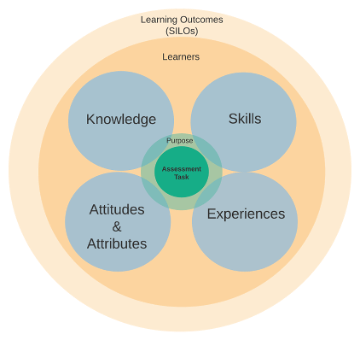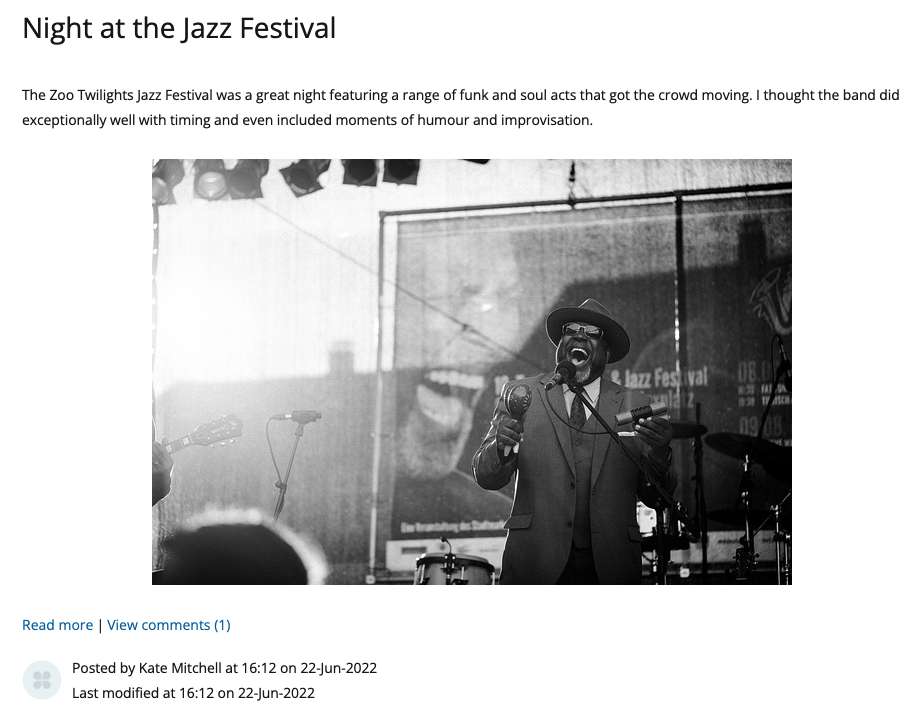Designing authentic assessments
Authentic assessments provide students with an opportunity to use and apply their knowledge and skills to real-world contexts, relevant to their discipline and aspiring profession. When done well, they have also been proven to have a positive impact on student learning, autonomy, motivation, self-regulation and metacognition (Villarroel, Verónica; Bloxham, Susan; Bruna, Daniela; 2018). Such assessments measure outcomes that represent appropriate, meaningful and worthwhile forms of accomplishment.
Example
Let’s say you are wanting to improve your negotiation skills. You enrol in Negotiation 101. You see one of its learning outcomes states “Apply effective negotiation strategies in a range of scenarios.” Then you take a look at the major assignment:
"Your task is to write a 4,000 word essay discussing the strategies that you would apply to effectively negotiate with others."
Feeling confident?
If this were the only assessment task, I’d be questioning whether I’d really get much out of it. Can you think of some ways you could make this assessment more authentic? How about this….
"You and your work partner will be presented with a business scenario. You are the seller and your work partner is the buyer. Select a negotiation strategy that you think would be most effective in this situation then demonstrate how this strategy can be applied through a short role play. Take turns as buyers and sellers."
(Note, for online subjects, students could complete this assessment by conducting the role play in a Zoom meeting and recording it).
In the assessment brief above, students are now presented with a task that is more appropriate, meaningful and worthwhile. It is more appropriate because it gets students to demonstrate their ability to actually apply their negotiation skills to real life scenarios, and not just write about it in theoretical terms. It is more meaningful to the students as they are situating themselves in a real life scenario and prompted to behave as professional negotiators. It is also more worthwhile for students as life-long learners as they will more vividly see their strengths and weaknesses through a role play. And when they face a similar scenario in their future workplace, they may recall and drawn upon the skills they developed in such an activity.
Where the essay is asking students to write about a subject, this example of a role-play assessment is asking the students to actually do the subject. And considering the learning outcome being assessed, we can also say it makes for a more valid assessment.

What about more conventional forms of assessment? Is there a place for these?
In a workplace-based environment, probably not. But in a primarily university-based environment, absolutely. We should not think too simply of assessments as being either ‘authentic’ or ’non-authentic’. Rather, there are degrees of authenticity. There are also subjects that require more theory, or are more research-focused. The nature and degree of authenticity is determined by the goals of a subject, its intended learning outcomes, and not to forget, the generic skills listed in a subject handbook entry, and determined by the graduate outcomes of a course.
Just as we should aim to make all assessments valid and reliable, we should also do our best to make them as authentic as possible to the extent sensible for each subject.
To do this, start by considering the learning outcomes your assessments need to address. Then, consider the learners. What knowledge, skills, attitudes, attributes and experiences do students need to acquire? If you were to focus solely on knowledge requirements and fail to consider other dimensions, then you may be missing an excellent authentic assessment opportunity. The 4,000 word essay in our Negotiation 101 subject is an example of this. By getting the students to actually carry out negotiations through a simulation or role play, we consider the attitudes and attributes of real-life negotiators in real-life settings, and don’t just get students to learn about others' experiences, rather they have the experience themselves.

Examples of authentic assessments across disciplines
| Discipline | Less authentic | More authentic | Example technology |
|---|---|---|---|
| Engineering | An invigilated and time-controlled tests checking understanding of textbook concepts. | A complex engineering problem needing to be solved requiring careful analysis of data, using computer applications (e.g., Excel, AutoCAD) reflection and shared results. | Download data files in the LMS that students then work from, then upload and share this in Canvas Discussions or Assignments. |
| Computer engineering | Respond to short-answer questions testing code knowledge. | Develop a web application, test it and share it with others for feedback and review. | Students can upload the web application link to a server, then copy that link into Feedbacks Fruits where students can then carry out a peer-evaluation using the many features available in Feedback Fruits. |
| Arts | Write a review in essay style critiquing a work of art, musical composition or performance in the form of an essay, | Write a review that takes the form of a blog post that peers can read and comment in. | Get students to create a blog in PebblePad. (See Figure 3 below). Students can share the links with others in the LMS and then read and respond to their peers. |
| Humanities | Respond to an essay question where all students are expected to produce a similar output (e.g. list and discuss all the causes of WWII). | Select a topic of interest to investigate further, allowing students to ask their own questions, do independent research, and formulate answers to their own questions. | Use Cadmus to write the research report, where students be presented with scaffolded instructions and more support materials. |
| Law | Respond to a series of short answer questions testing students ability to use legal terminology and interpret the law. | Critically review a case study that requires students to conduct their own research and apply their newly found knowledge of the law to a real life case study. | Present a real-life case study in H5P (see Figure 4 below) that steps students through a series of events that includes embedded quiz questions on the case itself and further research tasks that extend further. |


Further advice
Wanting to make your assessments more authentic but not sure how? Don’t hesitate to contact Learning Environments.
Resources
Wanting to read more about authentic assessments? You may like to look at these resources:
- Young, K., Palmer, S., & Campbell, M. (2017). Good WIL Hunting: Building Capacity for Curriculum Re-Design. Journal of Teaching and Learning for Graduate Employability, 8(1), 215–232.
This article discusses the change-management processes and behaviours necessarily to apply more Work Integrated Learning (WIP) into STEM courses and apply STEM-specific WIL experiences into the curriculum. - Villarroel, V., Bloxham, S., Bruna, D., Bruna, C., & Herrera-Seda, C. (2018). Authentic assessment: creating a blueprint for course design. Assessment & Evaluation in Higher Education, 43(5), 840–854.
This article provides a systematic review of authentic assessment literature form 1998 to 2015 in an attempt to clarify characteristics of authentic assessment and strategies around assessment design to support those in designing assessment tasks. It also provides a step-based model for designing and operating authentic assessments in a higher education context. - Designing authentic online collaboration (PDF 141.0 KB)
- Designing authentic mobile learning (PDF 224.1 KB)